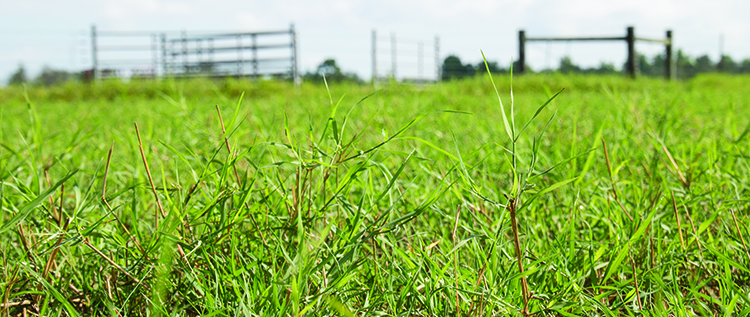
Many factors should be considered when determining how much, if any, fertilizer to apply to bermudagrass pastures. In the Southern Great Plains, here are some of the things that we take into consideration. You might have additional considerations in your area.
Stocking rate: The first consideration in fertilization is the desired stocking rate. Bermudagrass is an excellent forage species to manipulate carrying capacity through fertilization. Unfertilized bermudagrass will carry a certain number of animals per field. Adding fertilizer will boost forage production, which will allow for a higher number of grazing animals that can utilize a field.
If you do not need additional forage, there is no need to fertilize. Whatever amount of fertilizer you plan to apply, be realistic in determining your stocking rate. Overgrazing is damaging to the land and unprofitable. Having more animals than an operation can support with forage leads to purchasing large amounts of hay.
Soil tests: Base fertilizer applications on current soil test results. Many producers only apply nitrogen (N) and do not consider the soil’s pH, phosphorus (P), and potassium (K) levels. The full potential of nitrogen is not realized unless low P and/or K levels are first addressed, along with correcting highly acidic soils. If soil test recommendations call for lime, P, or K, and you are unwilling to apply them, do not apply N either.
Soil productivity: The rate of N fertilizer to apply depends on the soil productivity, the bermudagrass variety present, and the yield goal. Soils with low, inherent productivity such as shallow, rocky, or severely eroded soils are limited by factors other than soil fertility. It’s best to identify the most productive soils and fertilize them first. These soils have the most potential to convert fertilizer into grass.
Some producers desire to apply more fertilizer on the less productive soils to make them produce yield like a higher productive soil. This is a bit like taking a plow horse, feeding it a racehorse diet, and training it like a racehorse. You will end up with a horse that is faster than the average plow horse, but still nowhere near as fast as a racehorse.
Variety: The bermudagrass variety is important in determining N rate. In general, varieties selected from common bermudagrass do not respond as well to fertilizer as hybrid varieties. In our area, common bermudagrass rarely responds to N rates higher than 100 pounds per acre. We generally recommend 50 pounds of N per acre where common is the variety. Hybrid varieties such as Coastal, Midland 99, and Tifton 85 will respond to much higher N rates. If a good stand is present, these varieties will utilize N and convert it into forage until precipitation is limited. Obviously, nonirrigated bermudagrass in the eastern United States can utilize more N than in the Southwest due to higher precipitation.
Crude protein: Many people think fertilizing bermudagrass dramatically raises crude protein content. It is true that crude protein will be higher in fertilized bermudagrass, but the difference is small.
A research study conducted by Noble Research Institute from 2008 to 2010 compared yields and forage quality between seven varieties of bermudagrass with five rates of N fertilizer. This study showed crude protein content improved by 1 to 1.5 percentage units per 100 pounds of N per acre applied. We harvested these plots every 30 days, and crude protein contents were above 11 percent in the unfertilized plots.
Plant growth stage has more influence on crude protein content than fertilizer rate. Use a rotation plan and graze each field at least every 30 days, taking only the upper portion of the plant to optimize crude protein.
Weed status: Another factor to consider before fertilizing bermudagrass is the weed status in the field. Do not fertilize if the field has a lot of weeds and you don’t plan to control them that year. If you do fertilize, you will grow very large weeds.
Formulate a strategy
One way to plan a fertilization program is to overlay your soil test results with field productivity. Prioritize N fertilizer applications to those highly productive fields that do not require additional P and K fertilizer. These are the cheapest fields to fertilize.
Second, prioritize fields with average to good productivity that do not require P and K.
Third, consider fertilizing highly productive fields that need P and/or K. The last option for spending your N fertilizer dollars should be the low productivity fields or those that require a lot of P and K, unless money is not limiting.
There are at least two ways to determine the productivity of your fields. One is your experience. The other is the Web Soil Survey, a website that hosts the digital version of the soil survey for each county in the United States. Type Web Soil Survey into a search engine, find your place on a map, and see what soil types make up your fields.
This article appeared in the April/May 2018 issue of Hay & Forage Grower on page 38.
Not a subscriber? Click to get the print magazine

